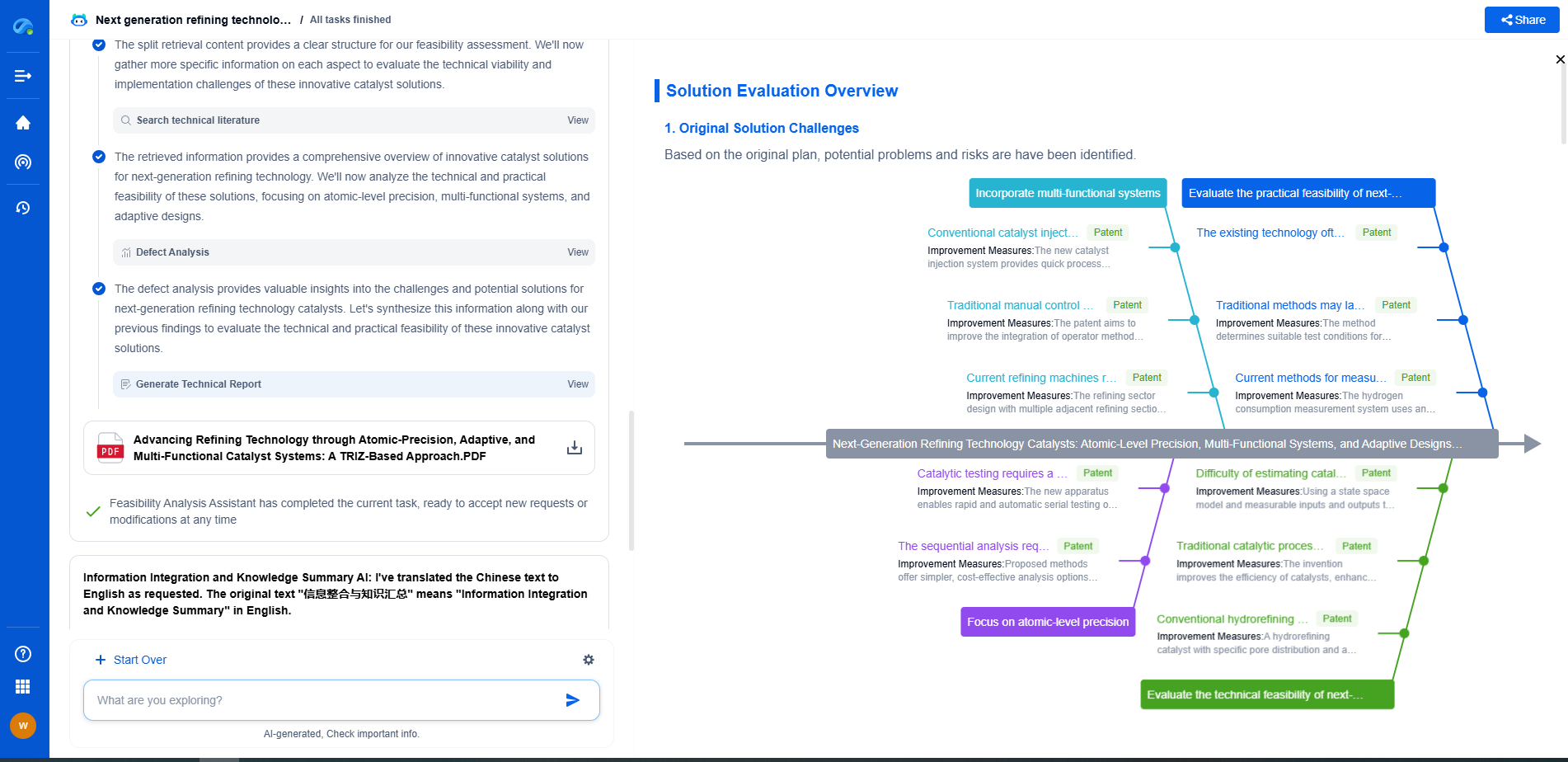Soft vs. Rigid Rehabilitation Robots: Which is Better for Long-Term Therapy?
JUN 26, 2025 |
In recent years, rehabilitation robots have become a cornerstone in assisting patients recovering from injuries and surgeries. These robots come in two primary types: soft and rigid. Each type offers unique advantages and challenges, particularly when considering long-term therapy. This article explores the differences between soft and rigid rehabilitation robots, evaluating which may be better suited for sustained therapeutic use.
Understanding Soft Rehabilitation Robots
Soft rehabilitation robots are designed with materials that mimic the flexibility and adaptability of human muscles. These robots are typically made from soft, elastic materials that can conform to the body's natural movements. This design aims to provide a more comfortable user experience, reducing the risk of discomfort or injury during therapy sessions.
One of the primary benefits of soft robots is their ability to offer a gentle, personalized approach to rehabilitation. They can easily adjust to different body shapes and movements, making them ideal for patients with varying needs and conditions. This adaptability is especially beneficial for patients with sensitive conditions or those in the early stages of recovery, where a gentle touch is crucial.
However, the soft materials used can sometimes limit the force and precision these robots can exert. This limitation could pose challenges for patients who require more robust assistance to regain their strength and mobility.
The Role of Rigid Rehabilitation Robots
In contrast, rigid rehabilitation robots are constructed from hard materials and are known for their structural stability and precision. These robots are often used in settings where more substantial support and force are necessary. They can provide consistent, repeatable movements that are essential for certain rehabilitation exercises.
Rigid robots are particularly effective for patients in need of defined and controlled therapeutic motions. Their sturdiness allows them to handle higher levels of resistance and weight, which can be crucial for building strength during the later stages of rehabilitation.
Despite these advantages, the rigidity can sometimes lead to discomfort, especially if the robot's movements are not perfectly aligned with the patient's natural range of motion. This can be a significant drawback for long-term therapy, where comfort and adaptability are paramount.
Comparing Effectiveness for Long-Term Therapy
When considering long-term therapy, it's essential to evaluate the specific needs of the patient. Soft robots offer an approach that emphasizes comfort and adaptability, which can be crucial for patients with long-term rehabilitation goals. Their ability to provide a gentle and flexible experience can encourage patient adherence to therapy regimens, which is often a challenge over extended periods.
On the other hand, rigid robots shine in scenarios where precise, repetitive movements are necessary to achieve therapeutic goals. Their ability to apply consistent force can lead to more significant improvements in muscle strength and joint mobility, essential for long-term progress in many rehabilitation cases.
Patient-Centered Considerations
Ultimately, the choice between soft and rigid rehabilitation robots should be guided by patient-centered considerations. Factors such as the specific rehabilitation goals, the patient's condition, and their comfort with the technology should play a significant role in decision-making.
For some patients, a hybrid approach that combines the benefits of both soft and rigid robots may be ideal. This approach can provide the adaptability and comfort of soft robots while still delivering the strength and precision of rigid robots when necessary.
Conclusion
Both soft and rigid rehabilitation robots have their place in long-term therapy, each offering unique advantages. The choice between them should be based on a detailed assessment of the patient's individual needs, rehabilitation goals, and personal preferences. By carefully considering these factors, therapists and patients can work together to select the most effective robotic assistance for sustained recovery and improved quality of life.
Ready to Redefine Your Robotics R&D Workflow?
Whether you're designing next-generation robotic arms, optimizing manipulator kinematics, or mining patent data for innovation insights, Patsnap Eureka, our cutting-edge AI assistant, is built for R&D and IP professionals in high-tech industries, is built to accelerate every step of your journey.
No more getting buried in thousands of documents or wasting time on repetitive technical analysis. Our AI Agent helps R&D and IP teams in high-tech enterprises save hundreds of hours, reduce risk of oversight, and move from concept to prototype faster than ever before.
👉 Experience how AI can revolutionize your robotics innovation cycle. Explore Patsnap Eureka today and see the difference.
- R&D
- Intellectual Property
- Life Sciences
- Materials
- Tech Scout
- Unparalleled Data Quality
- Higher Quality Content
- 60% Fewer Hallucinations
Browse by: Latest US Patents, China's latest patents, Technical Efficacy Thesaurus, Application Domain, Technology Topic, Popular Technical Reports.
© 2025 PatSnap. All rights reserved.Legal|Privacy policy|Modern Slavery Act Transparency Statement|Sitemap|About US| Contact US: help@patsnap.com

